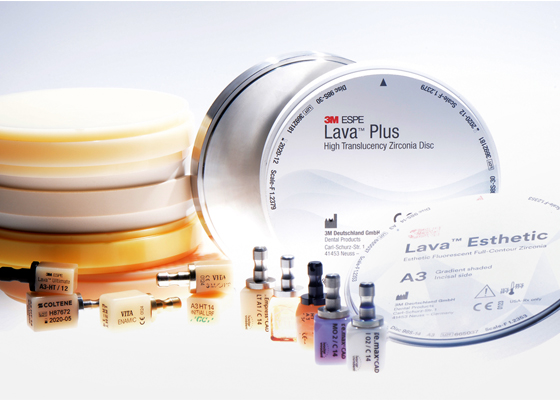Which substance is not one of the three hard substances of the tooth?
Brain of the Week – Chemistry


A simplified approach for navigating material selection decisions.
Currently, more and more tooth-colored materials are being introduced to the dental market, and it is quite difficult to keep track of all the developments, options and material classes that are offered – each of them with specific advantages and drawbacks. Moreover, some of these new restorative materials feature optical properties close to those of natural teeth, which, in combination with the possibility of adhesive luting, enable innovative, minimally invasive treatment options in restorative dentistry today.1
In this context, all-ceramic materials are a suitable solution for many indications within restorative dentistry, due to their favorable biocompatibility and their high esthetic potential. Just within this class of ceramic materials, many newly developed products have become available: In addition to a lot of glass ceramics, different types of zirconia – which are continuously being enhanced and modified – have been introduced, strengthening the current trend toward monolithic restorations that can currently be observed in the dental market.2
One drawback of this development is that this large number of options has turned the selection of a restorative material into a task that can be complex and challenging, and clinicians need to improve their knowledge: Starting with a correct classification and evaluation of the materials’ performance (e.g. the minimum material thickness) to utilize the appropriate ceramic material for the individual luting requirements. Only this knowledge allows a dentist to tailor the restoration to the specific needs of the patient.
To provide guidance in everyday clinical practice, a simplified decision process based on two important material parameters – strength and esthetic potential – might facilitate the material choice. Without over-simplification, this approach can help clinicians at least to avoid severe mistakes. It also includes an initial orientation concerning the indications a material can cover based on its strength.
Additional individual clinical parameters and the choice of luting mode will fine-tune this first orientation during the choice of material.
The figure below shows this classification and displays the flexural strength versus the esthetic potential of all-ceramic material classes. It provides some guidance to help you navigate the ever more complex material jungle. In general, the stronger the material, the lower its esthetic potential seems to be and the greater the need for veneering. Take a look and make your choice – with the focus on your individual patient!

Sources

Brain of the Week – Chemistry

Brain of the Week – Fun Facts

Brain of the Week – Estimate